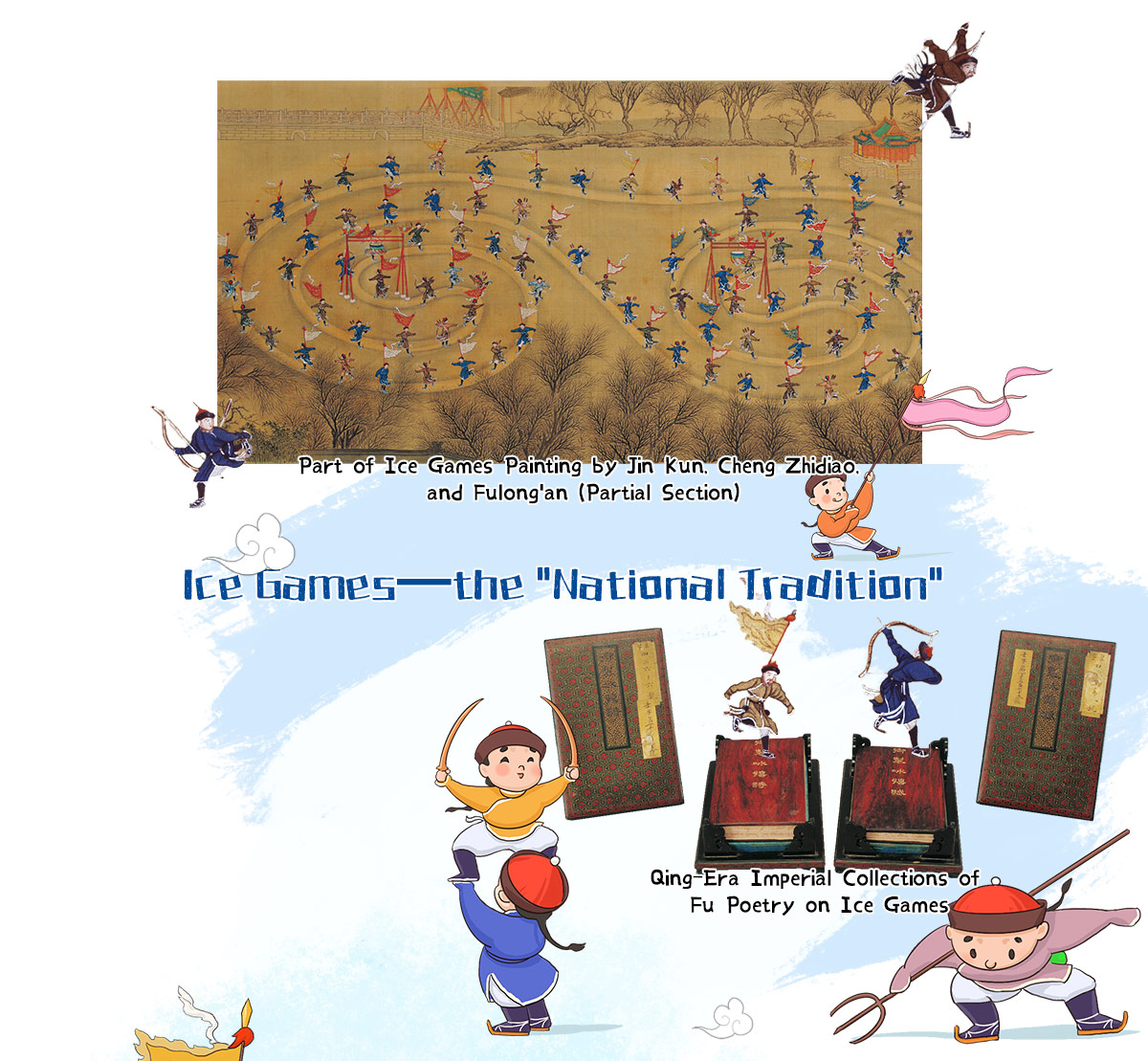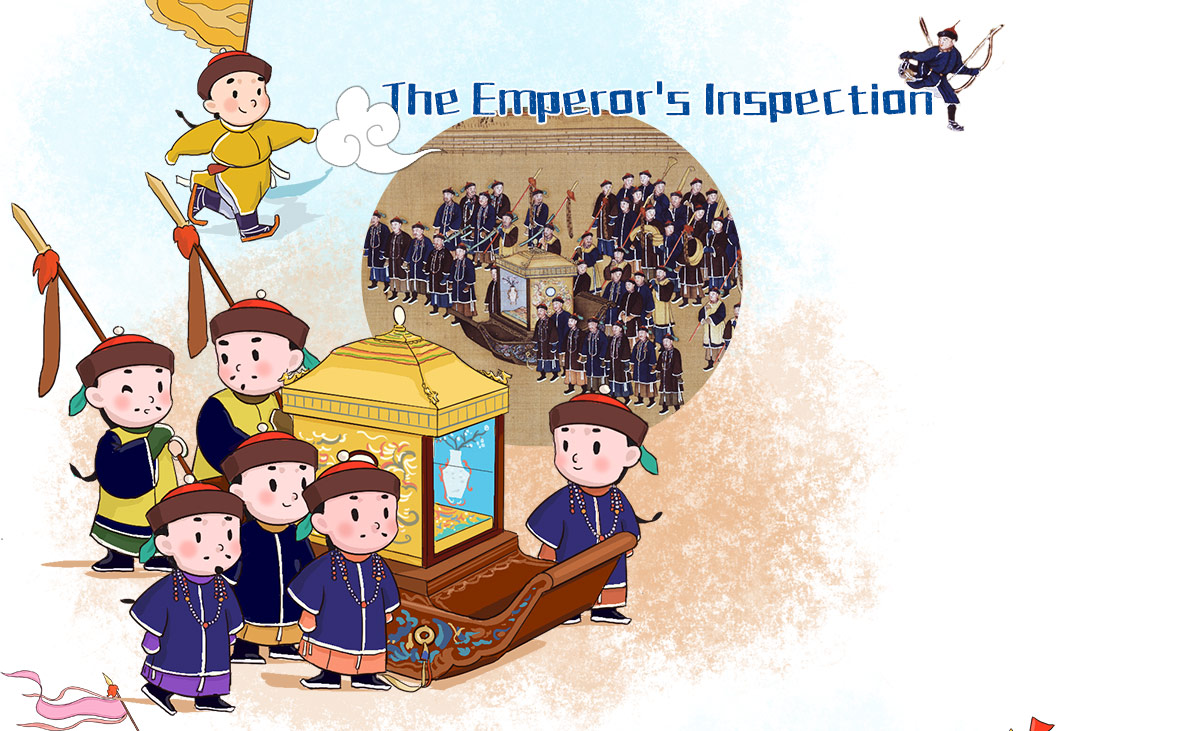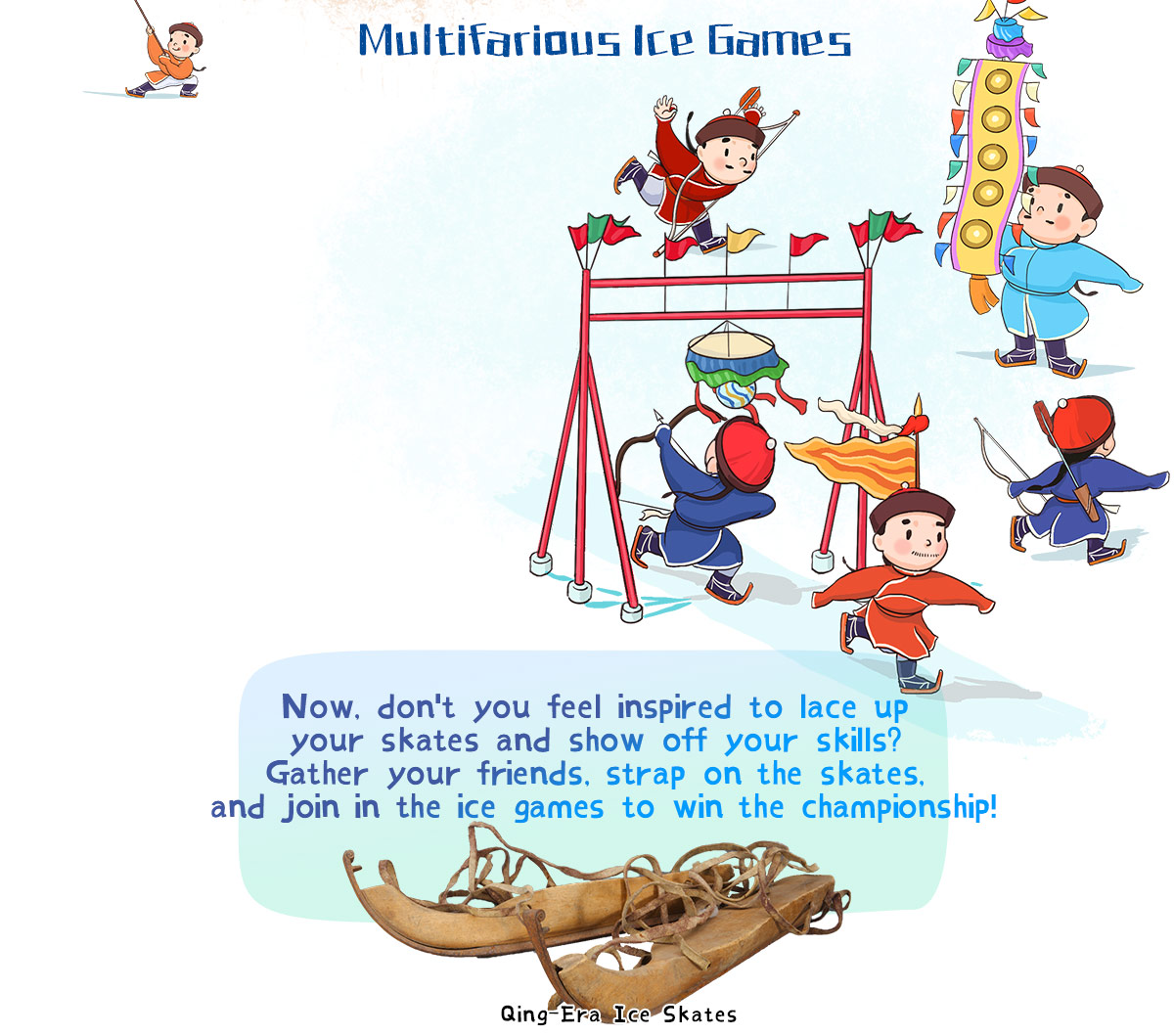Do you enjoy ice skating? This season is just the perfect time. Perhaps you assume ice skating is a “foreign novelty”, but let me tell you, ice sports were already popular in ancient China. Back then, it was known as “bingxi,” or “ice games.” Now a treasure housed in the Palace Museum, Ice Games Painting, can enable us to enjoy a “live show” of royal ice games during the Qing dynasty (1616-1911).
According to historical records, emperors watched ice games in their palaces as early as the Song dynasty (960-1279). By the Qing dynasty, ice sports had gained even greater prominence, officially designated by the emperors as a “national tradition.”
In northeastern China, ice skating had long been popular as both entertainment and military training among the Manchu people. As the Manchus moved to central China during the Qing dynasty, ice games became vital winter sports in the northern regions and were honored with the title “national tradition.” Ice skating, alongside football and wrestling, was even incorporated into the military training curriculum of troops guarding the capital. Emperors watched the troops’ ice-skating performances each winter to inspect their training results.
Participants would begin their intensive training every year after the Winter Solstice. Around the Laba Festival, magnificent ice events would take place on the Taiye Pond just west of the Forbidden City (present-day Nanhai, Zhonghai, and Beihai lakes in Beijing). Over 1,400 performers participated in these grand displays. The emperor, accompanied by princes, nobles, and civil and military officials, would personally attend the spectacle. They would observe competitive ice archery matches and dazzling ice acrobatics. The emperor sat regally on an ornate, ship-shaped ice sledge, guarded by the Eight Banners troops, while thousands of ice game performers showcased their skills in a majestic and awe-inspiring display. Emperor Qianlong (r. 1735-1796) was so enamored by these events that he commissioned court painters to immortalize the scenes. The Ice Games Painting you see today captures just such an imperial occasion from the Qing dynasty—complete with the imperial guards of honor, determined contestants, and a wide variety of ice activities—a live broadcast of the grand royal ice carnival.
With their skates secured and spirits high, the Eight Banners soldiers eagerly awaited the signal to start. At Emperor Qianlong’s command, marked by a wave of the red flag and a resounding cannon shot, they shot forward like arrows, racing toward the imperial sledge. The emperor and his ministers held their breath, eyes wide with anticipation as the soldiers surged forth. In a flash, the first few contestants reached the emperor’s sledge, claiming victory. Some skated so fast that they could not stop in time and had to be pulled back by imperial guards to slow them down. This thrilling race was called qiangdeng—a competitive speed skating event.
The next event, qiangqiu, was akin to “ice rugby.” Players were divided into red and yellow teams. A leather ball was kicked into the air by imperial guards, and the two teams scrambled and chased, filling the ice rink with shouts and cheers. Even Emperor Qianlong and his ministers were caught up in the excitement.
But the most brilliant performance was still to come. Three colorful ceremonial gates were set up on the ice. The Eight Banners skaters entered one by one along designated winding paths, weaving in intricate routines. They darted through the gates with graceful precision, displaying a variety of impressive stunts—some skated while juggling staves, others formed human pyramids in pairs, and some aimed arrows to shoot at decorative balls. The ice rink turned into a mesmerizing stage of artistry and acrobatics, leaving spectators in awe.


